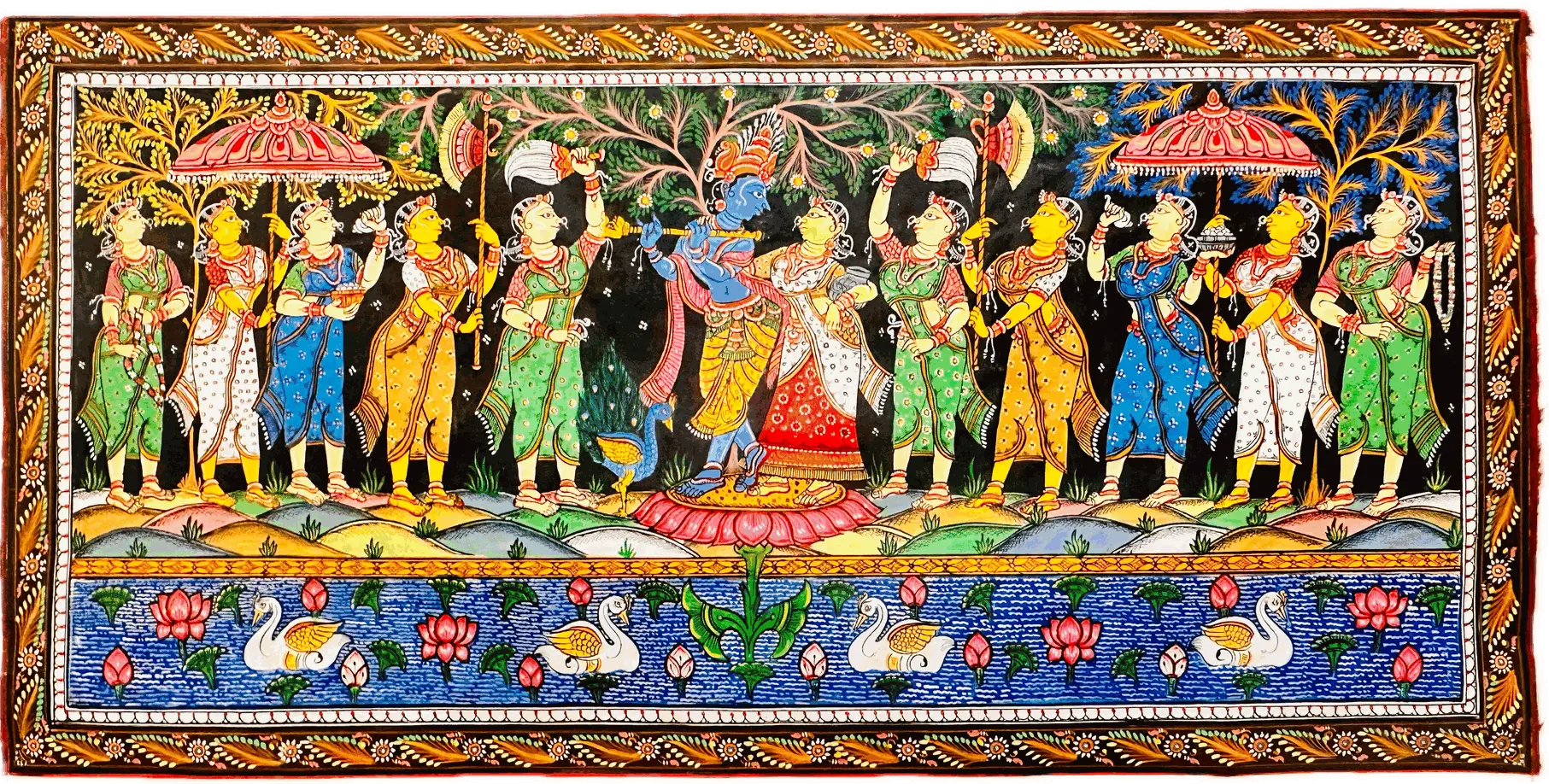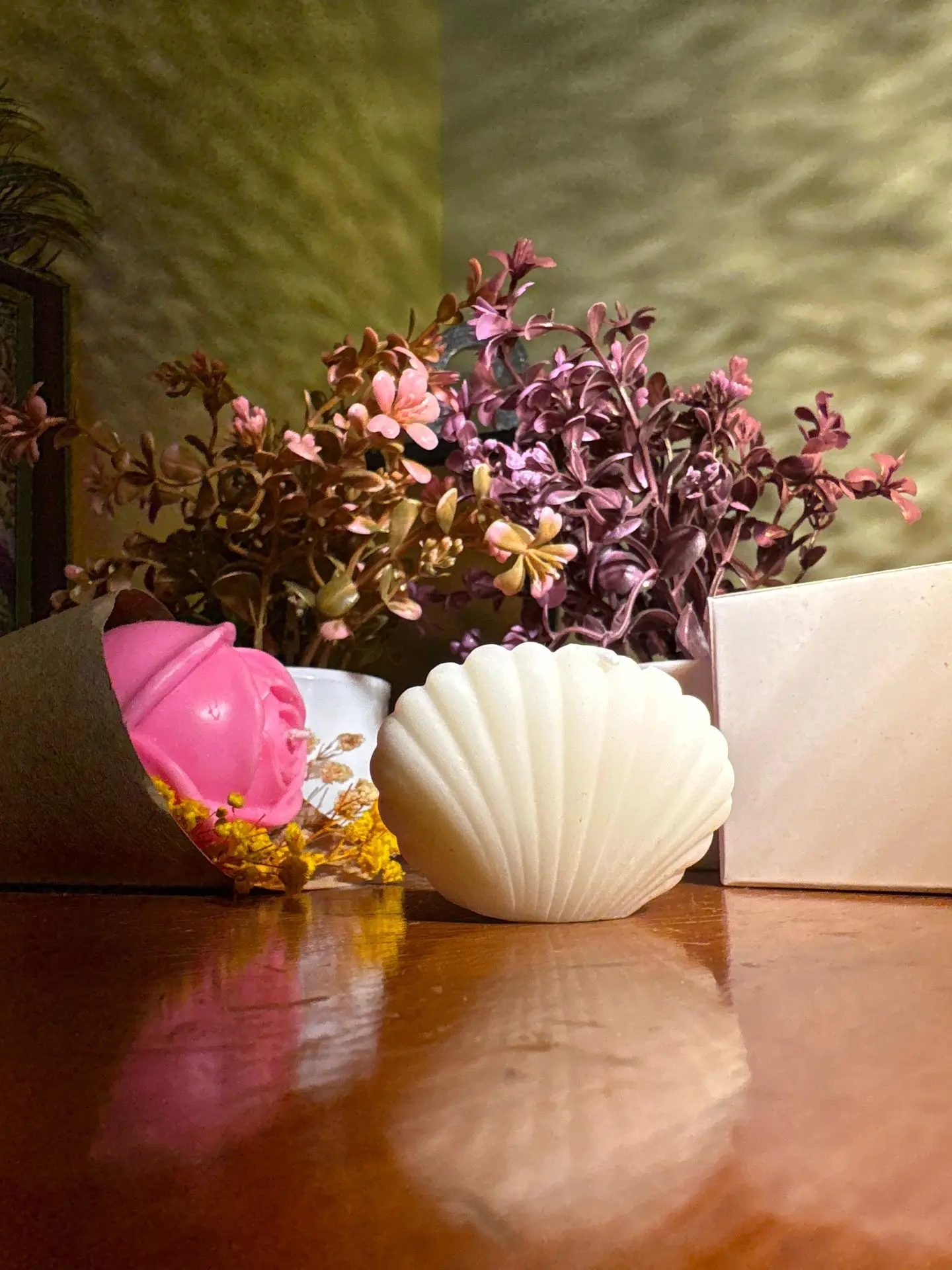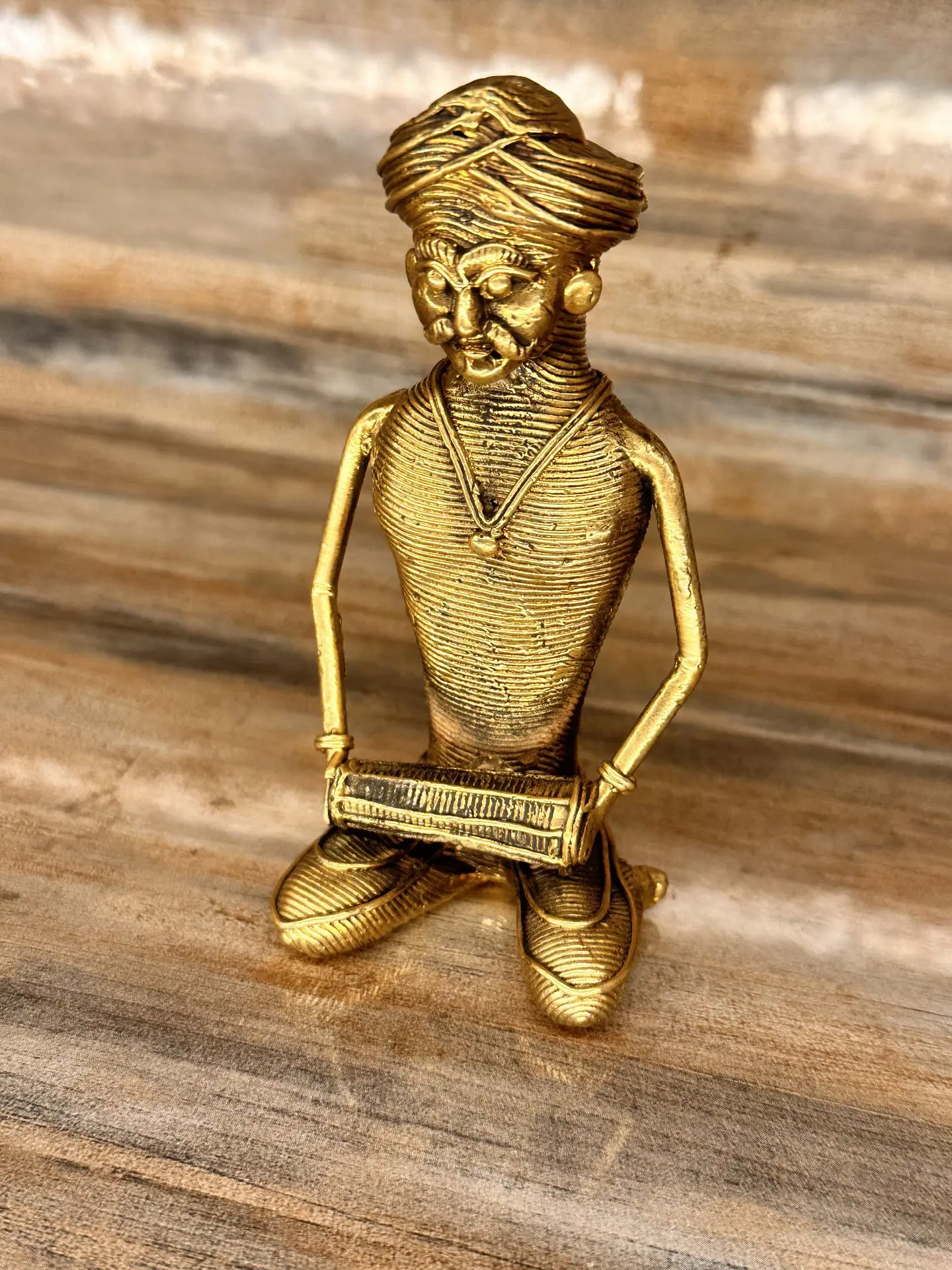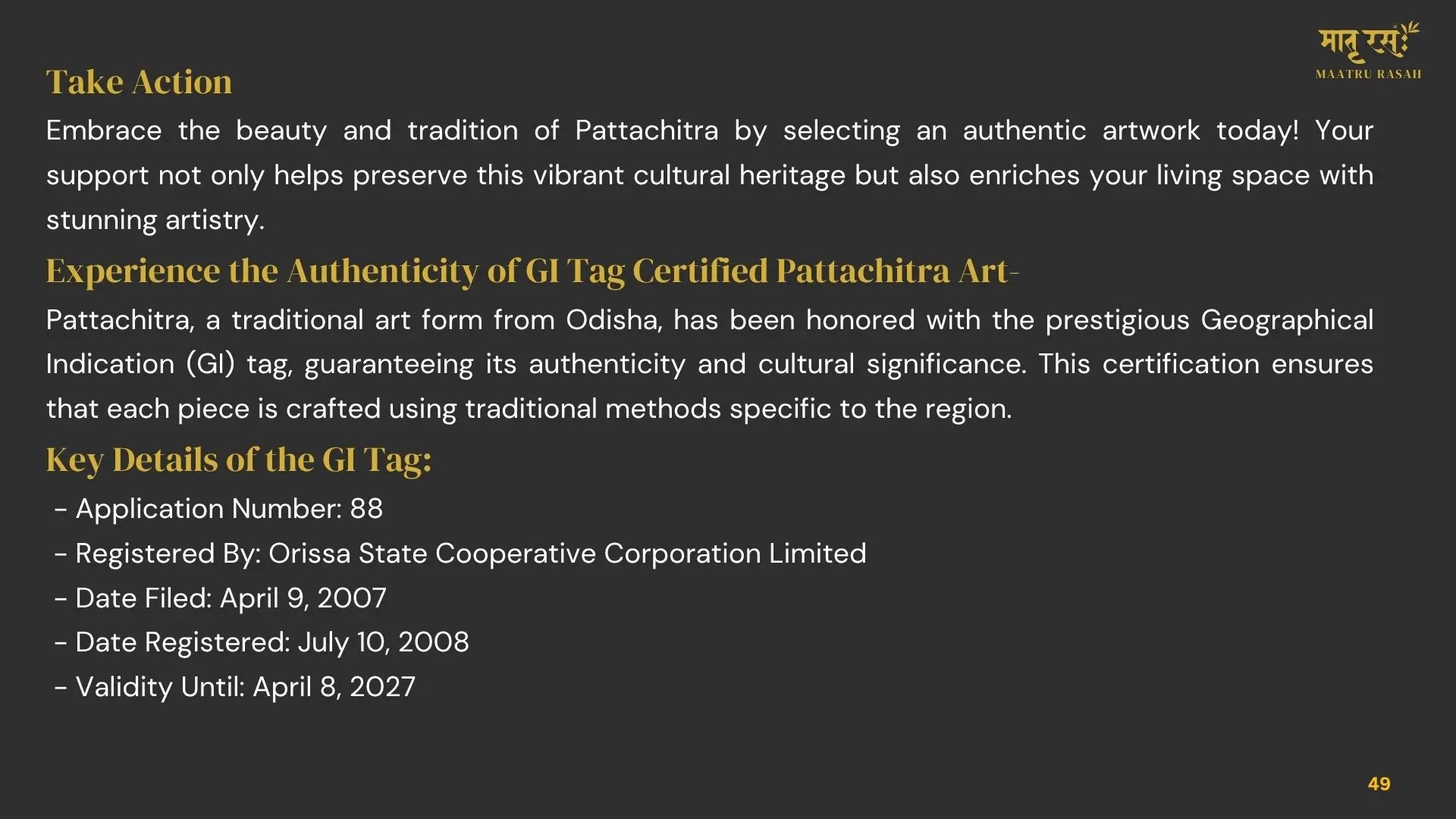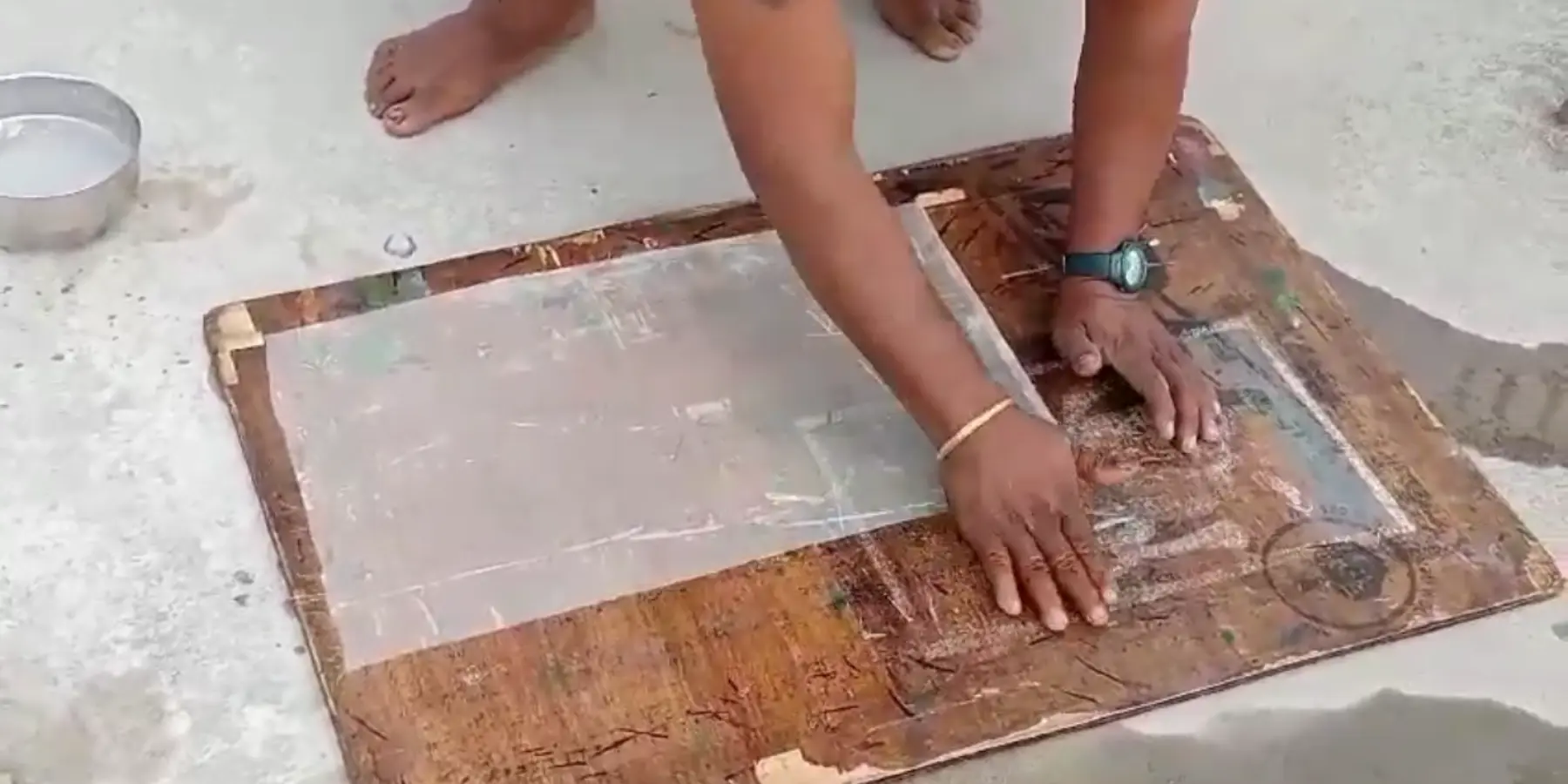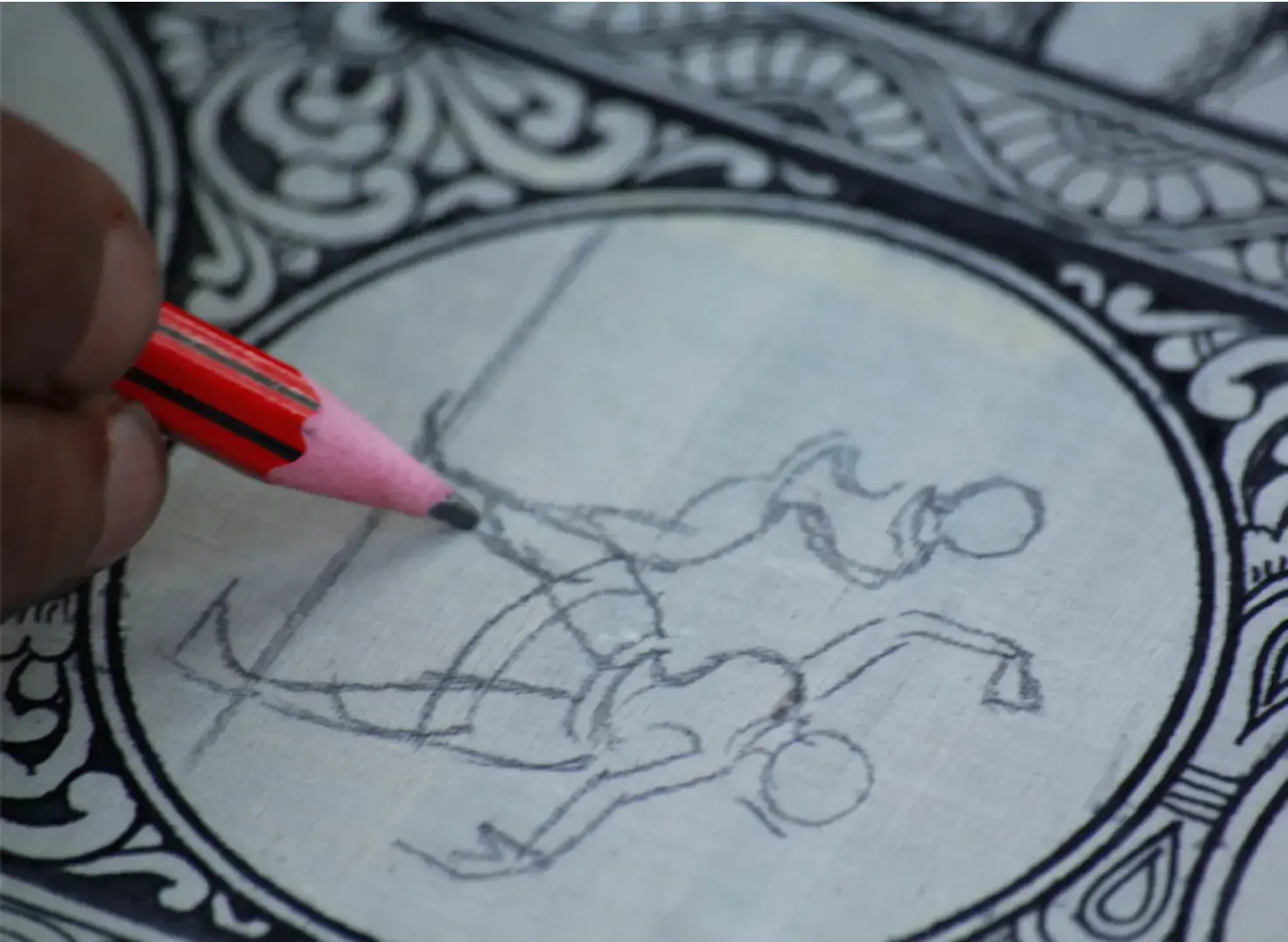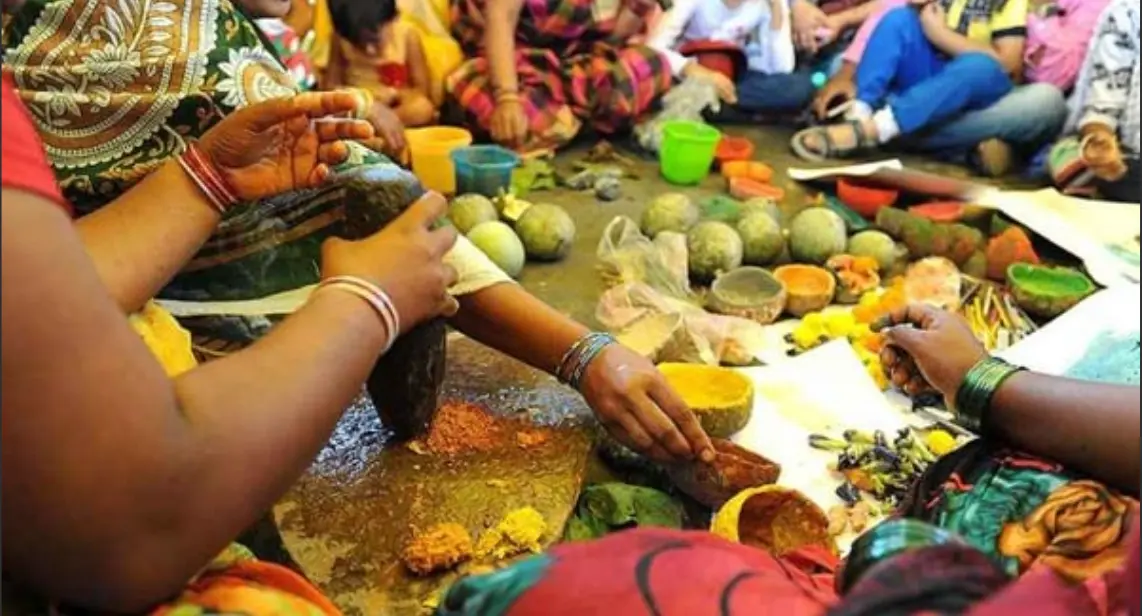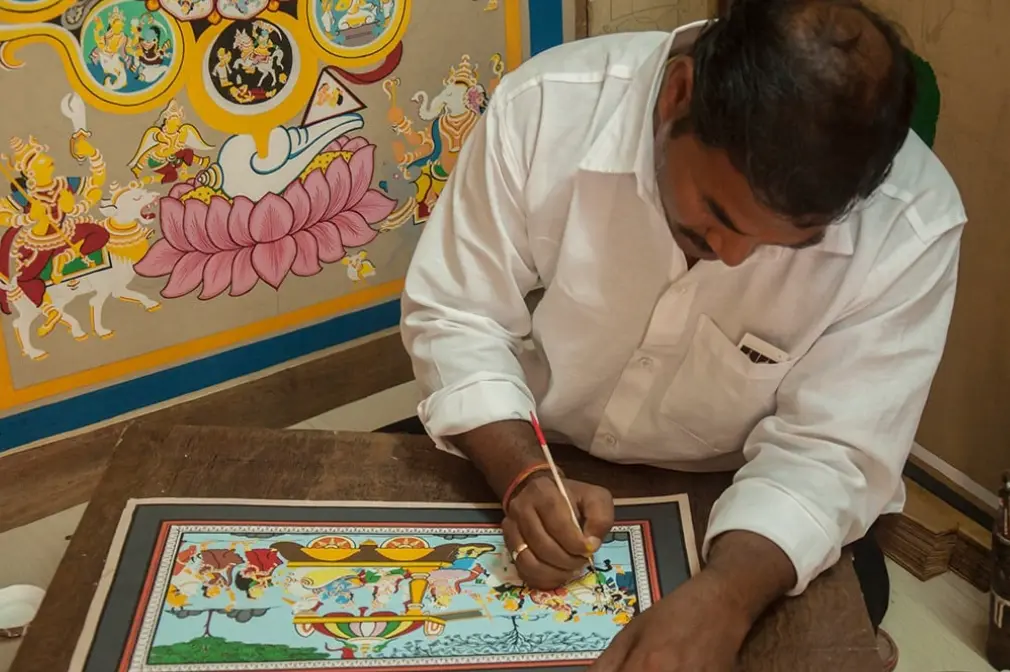Pattachitra, one of the most ancient painting arts of Odisha, India, literally means "cloth painting" in Sanskrit. This art form is closely linked to the rich cultural and religious fabric of Odisha, particularly its centuries-old rituals and the worship of Lord Jagannath. Pattachitra is characterized by its intricate details as well as cultural narratives and folktales depicted in vibrant colors.
